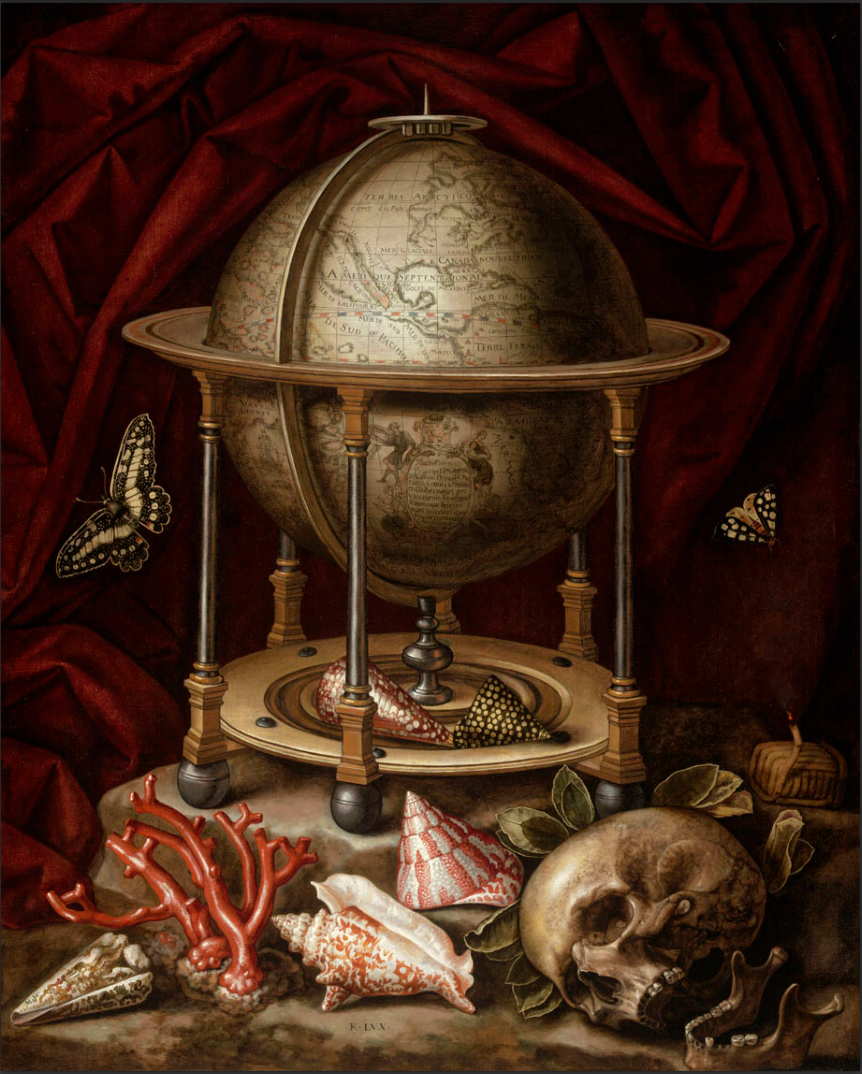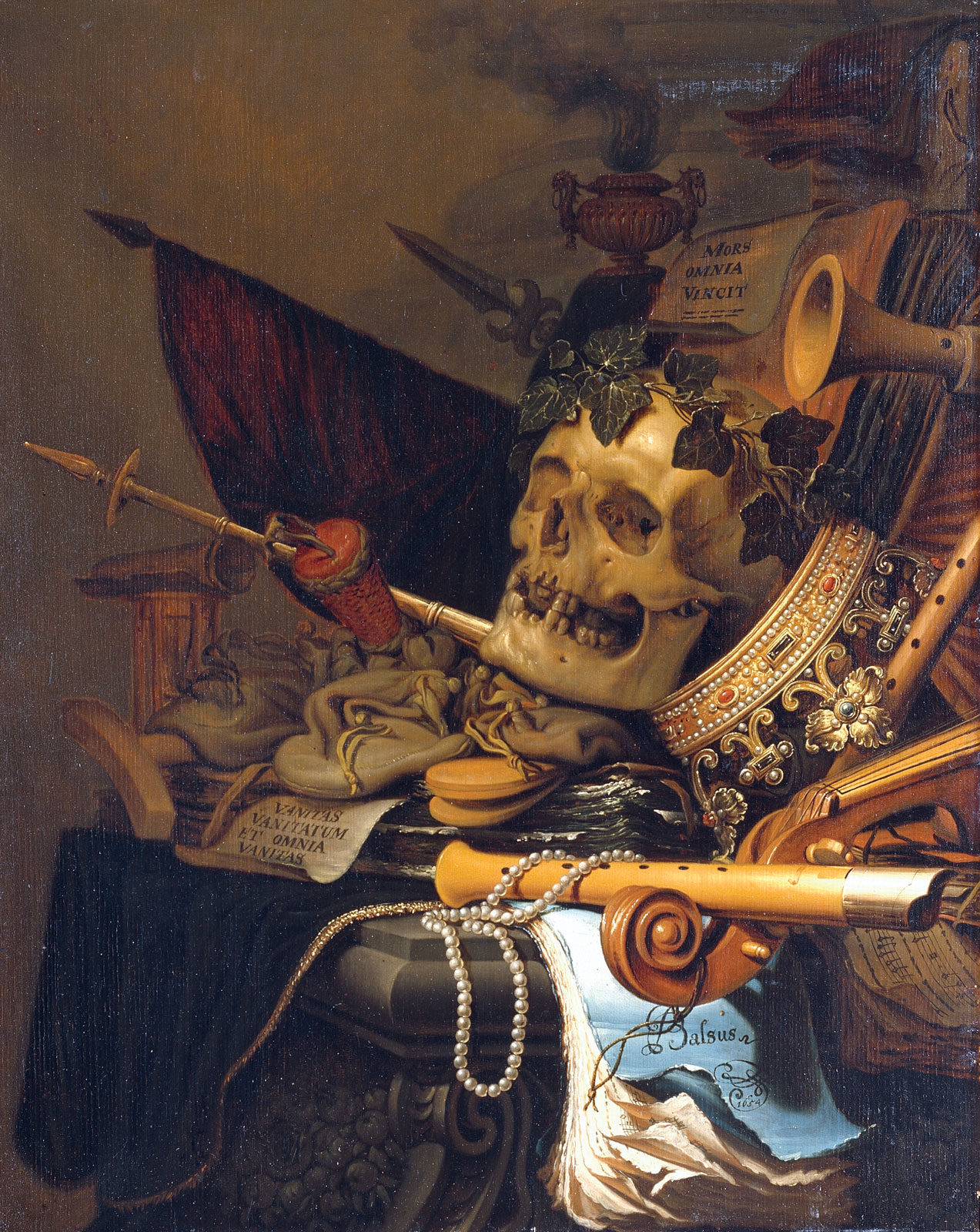A Vanitas is a still life painting from the Dutch Golden Age (1575-1675) that reminds us that life is finite and that worldly goods and pleasures are transient, ultimately worthless after death. Its namesake comes from the Book of Ecclesiastes: vanitas vanitatum, omnia vanitas. The Latin phrase translates to “vanity of vanities, all is vanity.”
Vanitas paintings are full of symbols of death and worldliness: typically skulls, bones, butterflies, bubbles, musical instruments, shells, jewelry, crowns, swords, cups, flowers, fruit, timepieces like watches and hourglasses, knives, and medical tools. The objects are crammed together in a disorderly fashion (which you can logically connect to our favorite vampire doctor if you like.)

The following is a list of symbol meanings reproduced from artseed.art:
- Skull – The fragility of life and the inevitability of mortality.
- Rotten fruit – Aging and the passing of time. Mature fruits mean fertility and wealth, due to the abundance of being able to let fruit go rotten. Different fruits have different connotations, such as apples, tomatoes, grapes, peaches, and pears meaning the fall of man.
- Peaches – symbolizes truth and salvation.
- Apple – wisdom, yet temptation and original sin.
- Watch, Hourglass or Timepiece – the transience and limitation of time.
- Books – human curiosity and knowledge, and the limitations and temporary nature of this.
- Shells – a sense of exoticism and wealth, as they were not commonly found in the Netherlands, where Vanitas paintings originated. Only the very wealthy would be able to afford exotic items such as shells, therefore they represent a sense of vanity and uncouth ostentatiousness. Also, a sign of death and frailty, as shells were often once homes for a living animal.
- Decaying Flowers – the decay of the body, and the inevitable mortality of human nature. Decaying flowers were often included in works with a variety of rich objects which depicted wealth, to contrast the beauty of wealth with the inevitability of impending death. Different flowers symbolize different virtues:
- Rose – love, sensuality, vanity
- Poppy – mortal sin and laziness, due to its opiate properties
- Tulip – irresponsibility, naivety, and foolishness.
- Silk and velvet materials – symbolize vanity. Silk and velvet were expensive materials, which were exclusive to the richest members of society.
- Oriental rugs or carpets – symbolize wealth. These were exclusive and expensive items, which were placed on tables to protect the color and quality of the wood. They were also an industrious symbol, as they were brought to Northern Europe through trade and business.
- Jewelry or Clothing – the temporal nature of beauty, and the sin of narcissism. They symbolize the transience of the beauty of the body and the nature of wisdom in human life. Earthly riches are important in life, but soon mean little once life is over.
- Mirror – a clear symbol of vanity and self–reflection.
- Candle or Lamp – the human soul. It’s loss or blowing out symbolizes the loss of the soul and the transience of life.
- Cups, playing cards, dice or chess – sign of faulty life goals, finding pleasures in sin.
- Arms and Armor – authority and power. A sign of earthly power and designations that mean little in the afterlife.
- Glass – an empty glass symbolizes death. Glass also connotes fragility, whilst white porcelain represents purity. A bottle symbolizes drunkenness and uncouth behavior.
- Knife – human vulnerability and mortality.
- Medical Tools – a reminder of the fleshy reality of the human body, and its multiple possibilities to fail.
Besides Artseed's Vanitas still life document, I also referred to The Collector’s article Vanitas: Dutch Master Paintings Explained. See the links below:
- https://www.artseed.art/wp-content/uploads/2020/05/Vanitas-Still-Life-and-their-Symbolism.pdf
- Https://www.thecollector.com/vanitas-dutch-master-paintings/
